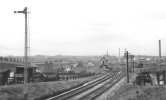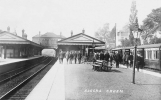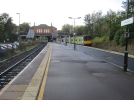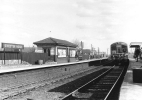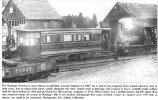-
Welcome to this forum . We are a worldwide group with a common interest in Birmingham and its history. While here, please follow a few simple rules. We ask that you respect other members, thank those who have helped you and please keep your contributions on-topic with the thread.
We do hope you enjoy your visit. BHF Admin Team
You are using an out of date browser. It may not display this or other websites correctly.
You should upgrade or use an alternative browser.
You should upgrade or use an alternative browser.
Railways, in , close or associated with Birmingham
- Thread starter Ray Griffiths
- Start date
Radiorails
master brummie
This was reported in 2021. Full details here.

 www.gov.uk
www.gov.uk

'The Frying Scotsman' British-made green cars exported by train which runs on used vegetable oil
New eco-locomotive highlights the important role rail freight can play to make transport greener.
Lloyd
master brummie
Why do we have a train that "will transport Toyotas built in Derby to continental Europe through the Channel Tunnel and import Toyotas on its return leg"? Different models? Why don't we make the ones we want, and they make the ones they want? The older I get, the less I understand this world.This was reported in 2021. Full details here.

'The Frying Scotsman' British-made green cars exported by train which runs on used vegetable oil
New eco-locomotive highlights the important role rail freight can play to make transport greener.www.gov.uk
Radiorails
master brummie
I don't think they fully understand as well, which might explain why so many go 'to the wall 'these days.
Richard Dye
master brummie
Many car makers produce cars on a platform basis will common architecture. They ship cars built in the UK to Europe to satisfy a demand and vice versa. this minimizes the effectiveness of production lines and optimizes the distribution of vehicles. Toyota & Honda have been doing this for a long time, Hyundai/Kia (same company) also do a great deal as do many car makers. Many Honda/Acura and Toyota/Lexus use the same platforms within their brands and architecture, does not mean they are the same cars.Why do we have a train that "will transport Toyotas built in Derby to continental Europe through the Channel Tunnel and import Toyotas on its return leg"? Different models? Why don't we make the ones we want, and they make the ones they want? The older I get, the less I understand this world.
mw0njm.
A Brummie Dude
The Class 40 locomotives were nicknamed as Whistlers"
The loco gained world-wide attention in a brief film career. Cleverly disguised as D326, the loco was used in a re-enactment of the 'Great' Train Robbery for the hit movie “Buster”
.

Operational (Currently on hire to The Severn Valley Railway)
Steam Heat Boiler: Operational
Livery: Dark Brunswick green, full yellow ends
Running number: 40106
The loco gained world-wide attention in a brief film career. Cleverly disguised as D326, the loco was used in a re-enactment of the 'Great' Train Robbery for the hit movie “Buster”
.

Operational (Currently on hire to The Severn Valley Railway)
Steam Heat Boiler: Operational
Livery: Dark Brunswick green, full yellow ends
Running number: 40106
Richard Dye
master brummie
Super! Don't rember the first one but clearly the other two!some of the types of BR signs my dads company made are like those below the company was located in nechells
i had one of these on my shed door,but left it when i moved here
View attachment 182697
View attachment 182696
Radiorails
master brummie
I remember the first one as they were much in evidence in my youth. In fat there is one about three miles away but fortunately in a overgrown and difficult place to reach.
Heartland
master brummie
The wording at the bottom of the plate is of interest as the principal North Staffordshire Railway offices were at Stoke on Trent. Yet Stone Station is an impressive building that still remains.
The Caldon Canal was part of the Trent & Mersey Canal network, which the North Staffordshire Railway absorbed when the North Staffordshire Railway was created by Act of Parliament. They became part of the LMS on Grouping, so the bridge plate would be before 1923.
The Caldon Canal was part of the Trent & Mersey Canal network, which the North Staffordshire Railway absorbed when the North Staffordshire Railway was created by Act of Parliament. They became part of the LMS on Grouping, so the bridge plate would be before 1923.
mw0njm.
A Brummie Dude
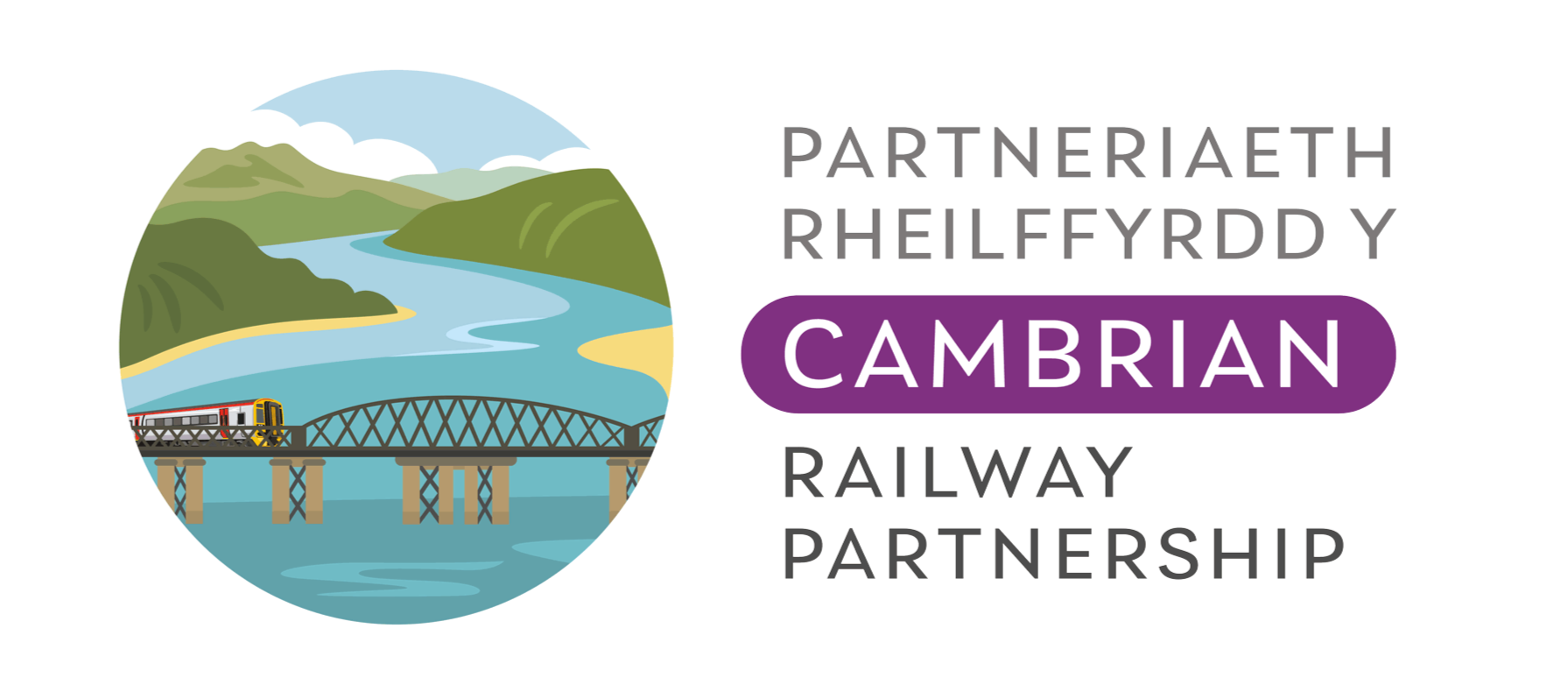
The Cambrian Line | Railway
The Cambrian Railway spans 120 miles of unspoilt natural beauty and is one of the most scenic routes in Britain. The Line takes you from Shrewsbury over the border into Wales, through rugged mountain terrain, quaint market towns, World Heritage sites and castles, towards the West Coast of Wales.
 www.thecambrianline.co.uk
www.thecambrianline.co.uk
Richard Dye
master brummie
Looks very civil in both cases!Acocks Green station January 1907
View attachment 183238
Robert Ferris
Acocks Green station January 2011
View attachment 183240
Nigel Thompson
paul stacey
master brummie
what a great shot of Adderley Park!!
mw0njm.
A Brummie Dude
Green liveried 0-4-0T saddle tank locomotive 1340 TROJAN. This engine was owned by the Alexandra Docks & Railway Company, it was built in 1897 by the Avonside Engine Company, Bristol, and rebuilt at Swindon in 1903 and sold by the GWR in 1932 for industrial use. View of the main shed at the GWR Didcot Railway Centre.
Heartland
master brummie
Shannon was formerly used on the Wantage Tramway. Trojan, the first time I saw that locomotive was when it was used at Alders Paper Mills, near Tamworth. Selling locomotives into use for industry sometimes led to their final preservation. This locomotive was built for British Railways Western Region, but was sold to Coventry Colliery and is now on the Severn Valley Railway.


paul stacey
master brummie
What wonderful photos, all great work horses, in their day!!
Richard Dye
master brummie
So very true Paul!What wonderful photos, all great work horses, in their day!!
From New civil engineer
Updated 30-year rail strategy for the West Midlands promotes new lines and services in the region
06 SEP, 2023 BY THOMAS JOHNSONThe West Midlands Rail Executive (WMRE) has updated its 30-year rail strategy and has outlined a number of proposals for new lines and services in the region.
The update to the rail strategy for the region comes five years after the 30-year plan was originally published, with the pandemic being cited as the reason for the refresh. WMRE’s new West Midlands Rail Investment Strategy 2022-2050 includes expanded proposals to support the recovery from Covid-19 and increase contributions towards net zero.
The updates have further been made to the strategy following a consultation that began in October last year.
The new proposals include a train service between Burton and Lichfield to be constructed and details of longer term plans for new railway between Walsall, Lichfield and onto central Birmingham. A new station at Alrewas is proposed for the Burton to Lichfield line and a new station in Aldridge is included as part of the proposal for the extension of Walsall services.
The strategy also details proposals to provide a New London - Coventry - Nuneaton - Trent Valley service and extend the services of Rugeley trains out to Stafford. WMRE believes all this can be achieved by 2031. Also suggested within this timeframe is the construction of new stations at Tettenhall, Shrewsbury Parkway, Brinsford and south of Stoke.
Further down the pipeline, WMRE want the Cross City Line extended to Burton with a new station at Polesworth Parkway, the reopening of the Sutton Park Line in two phases, the creation of services between Chase Line and Birmingham International and the reopening with Walsall – Lichfield services with new stations. It believes all this, plus the implementation of new stations in Fort Parkway, Kingsbury and Nuneaton Parkway, can be achieved by 2050 at the latest.
A key element of the strategy is the remapping of train services across Birmingham, which includes new cross-Birmingham links connecting Wolverhampton and Walsall with south Birmingham.
Further to this, the strategy outlines commitment to help “support delivery of new stations in east Birmingham and Warwickshire (for example Castle Bromwich and Galley Common) and new services (for example Sutton Park Line)”. Short term aspirations regarding MRH involved constructing a new platform at Birmingham Snow Hill and upgrading the Kings Norton to Barnt Green line.
The unchanged part of the plan reiterates that WMRE remains committed to the Midlands’ end of High Speed 2 (HS2) and the Midlands Railway Hub (MRH). The £1.3bn MRH will aim to unlock “the national rail network’s capacity bottleneck in central Birmingham, improve access to HS2 and deliver faster and more frequent connections across the West Midlands,” according to the report.
Since the first strategy was issued in 2018, the new Worcestershire Parkway station has opened, progress has also been made on the construction of five new railway stations on the Camp Hill line in Birmingham and the Wolverhampton to Walsall line, as well as the redevelopment of Coventry, Wolverhampton, Perry Barr and University railway stations.
With plans for roughly 400,000 more houses to be built in the Midlands, the strategy also looks at increasing the number of trains servicing major stations as well as building more new ones.
Current stations under construction include Darlaston, Willenhall, Moseley Village, Kings Heath and Pineapple Road, all set to be completed by 2023-24.
West Midlands mayor and WMRE chair Andy Street said: “Rail has an absolutely central role to play in our region’s success.
“New rail links and stations generate jobs for local people and prosperity for local communities. At the same time – by providing a sustainable car alternative – rail helps us to tackle the climate emergency and meet our #WM2041 net zero commitment.
“Since the first strategy was published five years ago, we’ve made tangible progress – drawing in more than £200M in funding for new and redeveloped stations.
“Alongside our own substantial programme of investment, it’s vital for the West Midlands that both HS2 and the MRH are completed - providing the much needed extra capacity required to improve services for residents right across our region and give them a rail network that is truly fit for the future.”
WMRE accountable director for rail infrastructure investment Peter Butlin said: “An enhanced, fit-for-purpose rail network doesn’t just benefit the major cities, it helps spread investment and improve the quality of life across the entire wider region from Shropshire and Staffordshire to West Northamptonshire and Warwickshire
“Our regional rail network must have the future capacity and capability required to meet future demand for travel and provide access to employment, education, healthcare and leisure opportunities for all of our citizens.”
Railway Industry Association Midlands & Eastern lead Milda Manomaityte said: “RIA Midlands & Eastern welcomes today’s announcement of the West Midlands Rail Investment Strategy, which strongly aligns with RIA Midlands & Eastern members priorities of having visibility and certainty around major projects delivery, decarbonisation, skills and innovation.
“We continue to call for close collaboration with the supply chain to develop an efficient and affordable rolling programme of electrification, to deliver the HS2 and Midlands Mainline Electrification programmes in full, and to provide the supply chain with full visible timeline of the Midlands Rail Hub programme, among other things. The full RIA Midlands & Eastern Priorities paper will be launched in Derby on 6 October and railway stakeholders are welcome to join the event.”
mw0njm.
A Brummie Dude
5 - Shannon / Jane | Didcot Railway Centre
Living Museum Of The Great Western Railway
didcotrailwaycentre.org.uk






